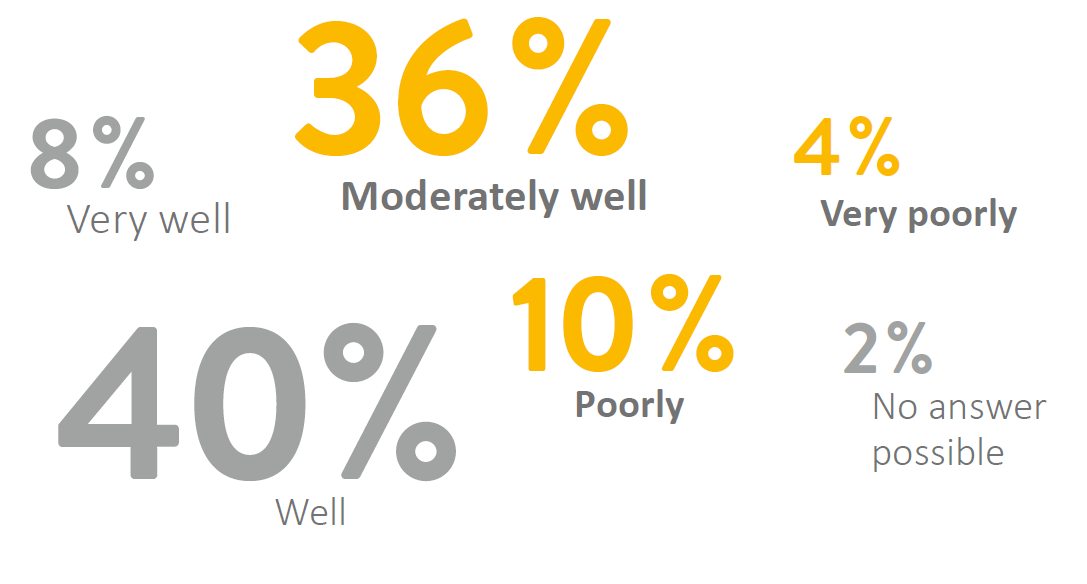Procurement and supply chain management directly affect liabilities and inventory; in other words, two out of the three variables.
Working Capital
MANAGEMENT
„You don’t talk about money, you simply have it.” This culture was rooted in ten years of economic growth, but brought to an abrupt end by the coronavirus pandemic. The focus has now switched to liquidity. Companies that taking the right measures can achieve or retain financial freedom, even during the crisis, so they can quickly get things up and running again when restrictions ease.”
Working capital management is an area where several different departments intersect; it tends to fall under the remit of the finance department but variables are often affected by procurement, supply chain management, production, and sales – even though these departments are often unaware of the role they play. Efficient liquidity management is therefore only possible if all involved parties know where the overlaps lie and create clear areas of responsibility.
No perspective without objectives
Unfortunately, this is often a stumbling block, as is clear from our study on working capital management with 65 respondents from companies in Europe. Although many companies implement measures to manage liquidity, they often lack a binding company-wide foundation for measuring their success. Just 55% of the companies surveyed have defined objectives and KPIs for working capital management, which indicates that almost half of them are flying blind.
Our study shows that only just over half of all companies (52%) have standard payment terms and also apply them consistently. Having individually negotiated payment terms not only involves more administration for procurement, finance, and accounts, but also reduces the transparency and the room for maneuver for the companies along with it.
Our study also shows that many companies are aware of these shortcomings. It is apparent that employees in small and mid-sized companies are significantly less satisfied with working capital management in their company than those in large companies. Whereas just under 70% of respondents from companies with turnover of less than one billion euros rate their working capital management as “needs improvement” or even “poor”, 71% of respondents from companies with turnover of over one billion rate it as “good” or “very good”.

Defining processes and roles precisely
Not only does it appear that larger companies are more aware of liquidity management, but the larger the company, the more precisely defined the processes and roles become – something we frequently see in our projects. This clearer structure improves professionalism and the ability to take action, particularly for areas of overlap.
If companies want to optimize their in-house structures and processes, they should start by analyzing the cash conversion cycle – which involves liabilities, receivables, and stock levels – and creating transparency over their in-house payment terms, terms that have been negotiated with suppliers, and stock levels. The next step is to drive forward the process of defining and harmonizing internal processes. Implementing consistent invoice management – for both receivables and liabilities – will noticeably improve liquidity within a relatively short period.
Procurement and supply chain management directly affect liabilities and inventory; in other words, two out of the three variables.
Looking at the cash conversion cycle shows that procurement and supply chain management directly affect liabilities and inventory; in other words, two out of the three variables. Despite this, buyers and supply chain managers are not normally encouraged to actively get involved in liquidity management – quite the opposite, in fact. Targets set are usually dominated by making savings and reducing costs, and the easiest way to achieve this is by taking large quantities of items, bundling requirements, paying quickly, and, linked to that, using discounts.
All these measures reduce liquidity because holding large quantities in stock ties up capital and paying invoices early extends the cash conversion cycle. If companies have sufficient cash reserves, it may make sense to take advantage of discounts or buy large quantities at lower prices. If, however, liquidity is weak and subject to a certain level of risk, having a well-stocked warehouse isn’t necessarily an advantage.
On the other hand, minimizing stock levels is not a general solution in uncertain times either. What companies actually need is an inventory strategy tailored to their requirements, with a buffer for key parts to safeguard against risks at all times or to be able to track extraordinary sales successes. Procurement, production, supply chain management, and sales all need to cooperate with each other to develop this kind of strategy.
Shorter lead times, punctual deliveries, and batch sizes that are adjusted to the forecast demand can be achieved by working closely with key suppliers. Framework contracts serve two purposes: they boost flexibility so companies can respond to changes in demand and they also offer security so suppliers have a vested interest in being as supportive a partner as possible to their customers.
Procurement is responsible for drawing up contracts and collaboration agreements, and negotiating payment terms as well as quantities, prices, and delivery deadlines with suppliers. Having more time to pay frees up more operating capital, which can then be used to cover other financial obligations.
However, assessing the financial situation and strategic importance of suppliers remains an important step before deciding to extend payment terms. If a supplier is already facing difficulties, then having to wait longer to be paid may be the straw that breaks the camel’s back, not only endangering the relationship of trust but also, in the worst-case scenario, the supply chain for components. That is why companies should assess each supplier and its current economic situation on a case-by-case basis.

Unlike other contractual conditions, payment terms are often something of an afterthought for buyers. Although working capital can significantly affect the variables, many procurement departments tend not to be particularly aware of it. If companies want to embed liquidity management across departments, then they need to include departments that significantly affect it in the incentives that they offer. Gamification elements can also be used to bring people on board; for example, giving out regular Working Capital Champion awards.
To improve working capital management in the long-term, KPIs should be included in the monthly review. The finance department can head up a steering group that provides ongoing monitoring and develops binding targets company-wide. Ideally, any department that can impact the cash conversion cycle will also have permanent representation in the steering group.
As well as setting overarching targets and coordinating them with management, another important task for this group is to translate these targets into specific tasks for individual departments. If the overall goal is to shorten the cash conversion cycle to increase liquidity, for example, then procurement needs to agree payment terms that are as long as possible instead of negotiating discounts for early payment. Targets can only be achieved in the long-term if every employee in the procurement department is aware of and familiar with these areas of overlap, not just the members of the steering group.
